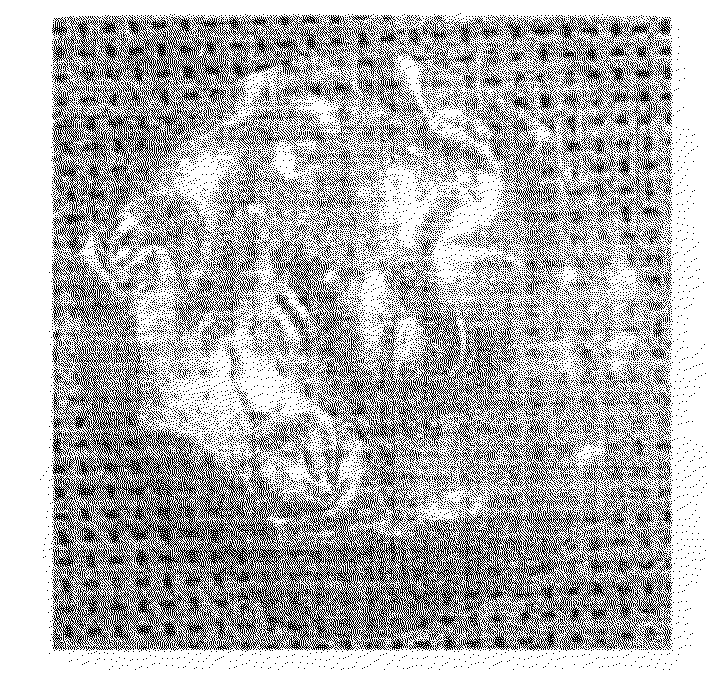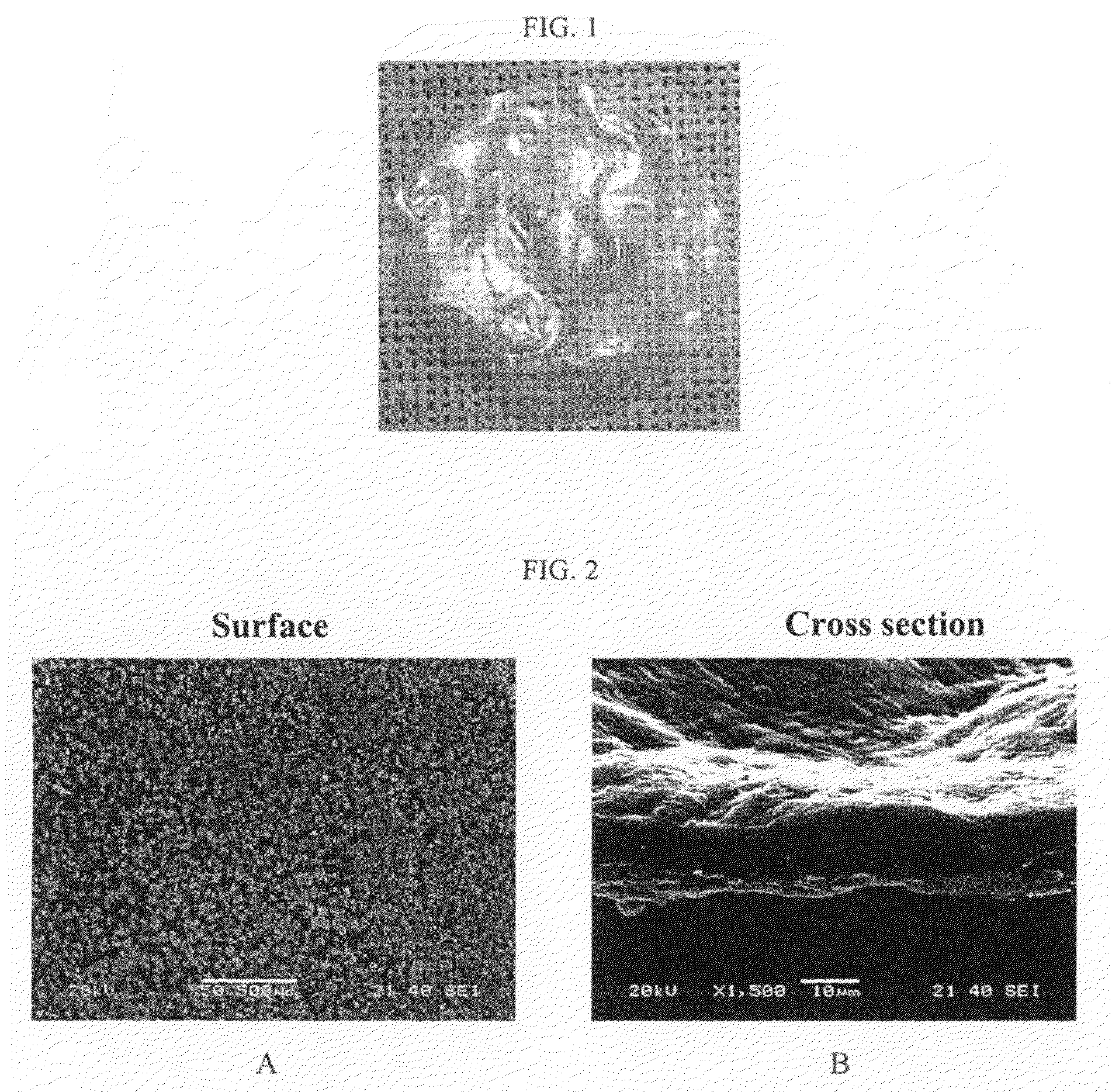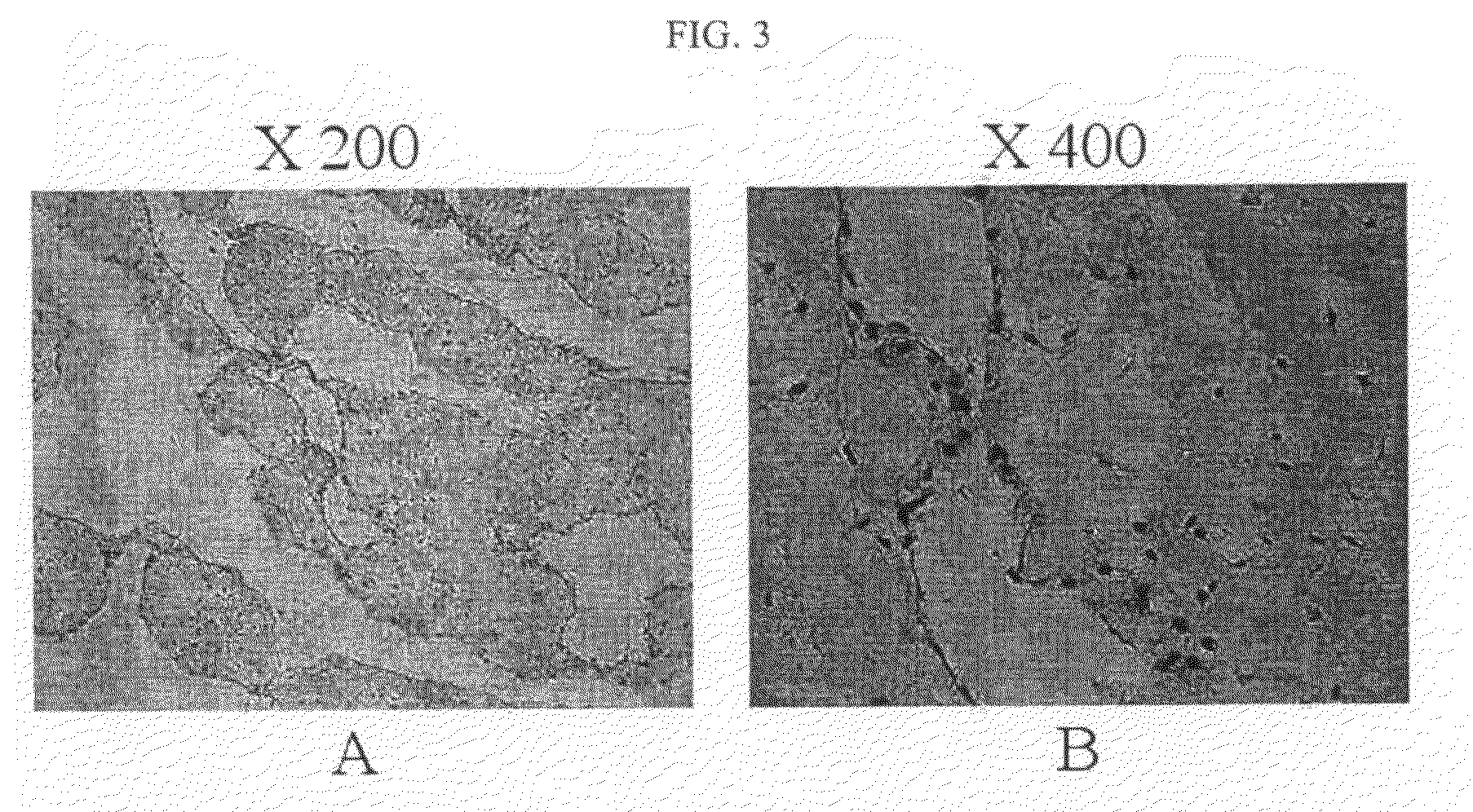Method for preparing a cell-derived extracellular matrix membrane
a cell-derived extracellular matrix and membrane technology, applied in the field of cell-derived extracellular matrix membranes, can solve the problems of affecting the quality of patients' lives, bone marrow-derived blood clots, and it is difficult to expect successful healing using bone marrow stimulation
- Summary
- Abstract
- Description
- Claims
- Application Information
AI Technical Summary
Benefits of technology
Problems solved by technology
Method used
Image
Examples
example 1
Isolation of Pig Chondrocytes
[0059]2-week-old pigs without cholera, other viruses and contagious diseases were excessively anesthetized to kill according to animal ethics policy. In a sterile environment, cartilages were harvested from the stifle joint. The harvested cartilages were sliced into small pieces on a clean work table and treated with 0.1% collagenase for 12 hours. After filtering cells with a 0.4 μm filter, chondrocytes were isolated by centrifugation.
example 2
Preparing of a Chondrocyte-Derived ECM Membrane
[0060]The chondrocytes isolated in Example 1 were seeded onto a 6-well culture dish at a concentration of 0.7×105 cells / cm2 and then cultured in a culture medium (DMEM+20% FBS+1% penicillin-streptomycin+5 μg / mL ascorbic acid) for 3 weeks. The culture medium was replaced every three days. After 3 weeks, the ECM film was washed with PBS three times and separated from the 6-well culture dish. The prepared ECM membrane exhibited a semi-transparent thin membrane type (FIG. 1)
example 3
Analysis of Physicochemical Properties of an ECM Membrane
3-1: Microstructure Analysis of an ECM Membrane
[0061]The microstructure of an ECM membrane was analyzed by scanning electron microscope (SEM). The ECM membrane prepared in Example 2 was fixed with 2.5% glutaraldehyde for 1 hour and washed with phosphate buffer solution. After dehydrating specimens with ethanol to dry, their surface and cross section were observed by an electronic microscope (JEOL, JSM-6380, 20KV, Japan). As a result, tough surface was observed due to structural bodies which seem to be cells and the cross section displayed about 10˜20 μm thickness.
3-2: Histological Observation of an ECM Membrane
[0062]The ECM membrane prepared in Example 2 was fixed with 4% formalin solution for 24 hours, then embedded in paraffin and sectioned. The cross sections were stained with hematoxylin and eosin (H&E). The observation presented that cells having a nucleus were scattered inside of structural bodies which appear to be ECM ...
PUM
| Property | Measurement | Unit |
|---|---|---|
| compressive strength | aaaaa | aaaaa |
| thickness | aaaaa | aaaaa |
| temperature | aaaaa | aaaaa |
Abstract
Description
Claims
Application Information
 Login to View More
Login to View More - R&D
- Intellectual Property
- Life Sciences
- Materials
- Tech Scout
- Unparalleled Data Quality
- Higher Quality Content
- 60% Fewer Hallucinations
Browse by: Latest US Patents, China's latest patents, Technical Efficacy Thesaurus, Application Domain, Technology Topic, Popular Technical Reports.
© 2025 PatSnap. All rights reserved.Legal|Privacy policy|Modern Slavery Act Transparency Statement|Sitemap|About US| Contact US: help@patsnap.com



